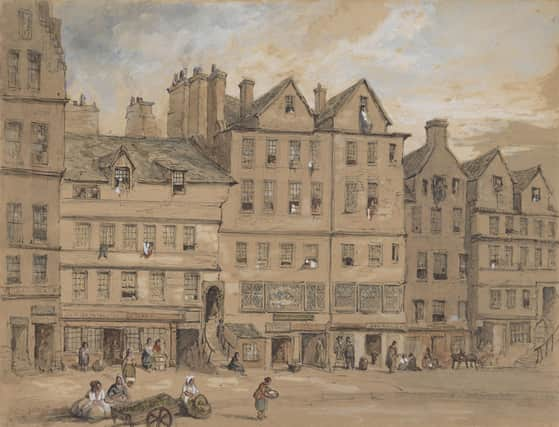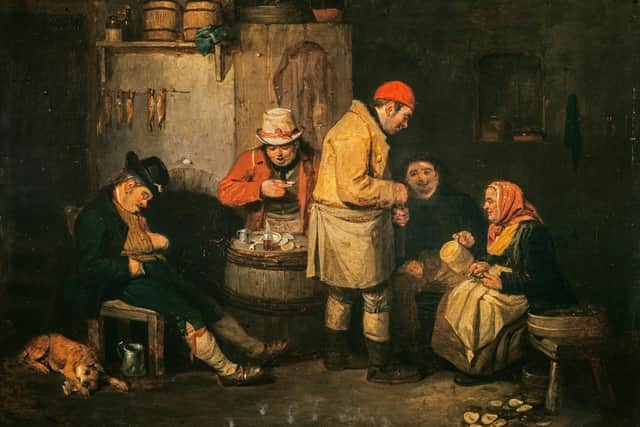Workmen uncover oyster shell wall in 17th Century Edinburgh shop


Now, it would appear the discarded shells, which were often just tossed on the floor of the city taverns, lasted much longer than their contents.
Workmen renovating Gladstone’s Land, a 17th Century tenement house in the Royal Mile, have uncovered an entire wall of oyster shells, with the super-strong material used to fill in the gaps between the masonry.
Advertisement
Hide AdAdvertisement
Hide AdThe wall is in the part of the building that was once an upmarket shop, which sold items such items as spices, fabrics and tobacco, with the shells ‘almost certainly’ coming from the tavern that was housed in the basement of the building.


Kate Stephenson, visitor service supervisor at Gladstone’s Land, which is run by National Trust for Scotland, said: "We are having a huge renovation across Gladstone’s and the oyster shells were found on the groud floor.
“They were used as a filler between the stone and brick and we knew we had a small patch but now a huge area that we didn’t know about has been uncovered.
“The ground floor was used as a shop but they almost certanily came from the tavern which was in the basement.
“In the 17th and 18th Century, oysters were a bar snack and it would have been much like having a bag of crisps or peanuts today. They were eaten in enormous numbers by all classes in Edinburgh.”


Oysters were farmed from the Firth of Forth at the time and by the 1790s it is thought that as many as 30 million oysters were harvested from the waters in a single year.
Ms Stephenson added: "This enormous consumption continued into the 18th Century when oyster cellars were created in Edinburgh where you had a beer and you had your oysters, with the oysters really becoming the experience.
"The oysters coming from the Forth were also exported to London and Amsterdam. You are talking about huge numbers of oysters.”
Advertisement
Hide AdAdvertisement
Hide AdEfforts to counter over-harvesting of oysters in the Forth repeatedly failed with the population going into terminal decline and the shellfish taking its place as a luxury food as numbers dwindled.
In 1882, only 55,000 oysters were landed from the Forth with the number falling to 6,000 the following season. A decade later and the catch was down to 1,200 with the population declared extinct in 1957.
The tavern at Gladstone’s Land, which is likely to open again to the public in April with a coffee shop and ice cream parlour in the old shop premises, did a brisk business in the most fashionable part of 17th Century Edinburgh.
Earlier research by NTS found that the tavern, which was down a narrow close and had no natural light, was frequented by a wide cross-section of Edinbrgh society and would have been used conventional business transactions to gambling and prostitution.
If those oyster shell walls could talk.
